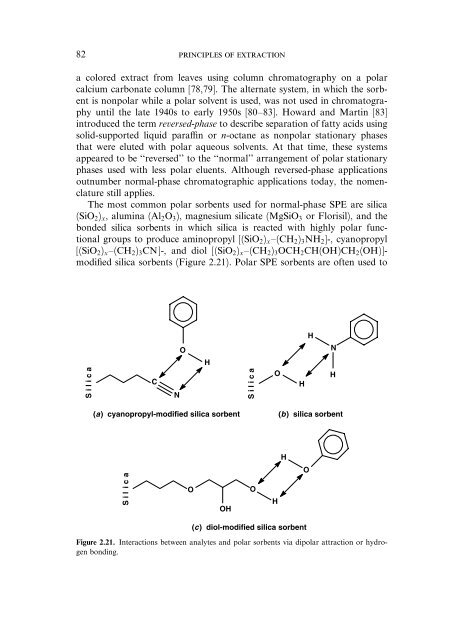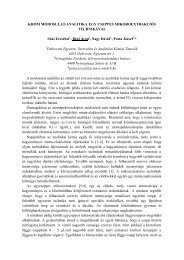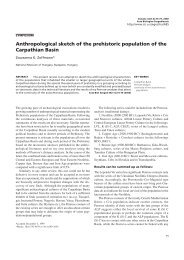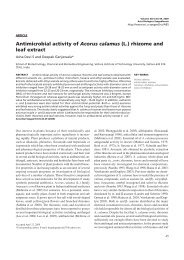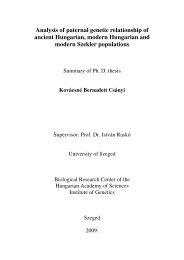principles of extraction and the extraction of semivolatile organics ...
principles of extraction and the extraction of semivolatile organics ...
principles of extraction and the extraction of semivolatile organics ...
Create successful ePaper yourself
Turn your PDF publications into a flip-book with our unique Google optimized e-Paper software.
82 <strong>principles</strong> <strong>of</strong> <strong>extraction</strong><br />
a colored extract from leaves using column chromatography on a polar<br />
calcium carbonate column [78,79]. The alternate system, in which <strong>the</strong> sorbent<br />
is nonpolar while a polar solvent is used, was not used in chromatography<br />
until <strong>the</strong> late 1940s to early 1950s [80–83]. Howard <strong>and</strong> Martin [83]<br />
introduced <strong>the</strong> term reversed-phase to describe separation <strong>of</strong> fatty acids using<br />
solid-supported liquid para‰n or n-octane as nonpolar stationary phases<br />
that were eluted with polar aqueous solvents. At that time, <strong>the</strong>se systems<br />
appeared to be ‘‘reversed’’ to <strong>the</strong> ‘‘normal’’ arrangement <strong>of</strong> polar stationary<br />
phases used with less polar eluents. Although reversed-phase applications<br />
outnumber normal-phase chromatographic applications today, <strong>the</strong> nomenclature<br />
still applies.<br />
The most common polar sorbents used for normal-phase SPE are silica<br />
(SiO2)x, alumina (Al2O3), magnesium silicate (MgSiO3 or Florisil), <strong>and</strong> <strong>the</strong><br />
bonded silica sorbents in which silica is reacted with highly polar functional<br />
groups to produce aminopropyl [(SiO2)xa(CH2)3NH2]-, cyanopropyl<br />
[(SiO2)xa(CH2)3CN]-, <strong>and</strong> diol [(SiO2)xa(CH2)3OCH2CH(OH)CH2(OH)]modified<br />
silica sorbents (Figure 2.21). Polar SPE sorbents are <strong>of</strong>ten used to<br />
S i l i c a<br />
C<br />
N<br />
O<br />
H<br />
(a) cyanopropyl-modified silica sorbent (b) silica sorbent<br />
S i l i c a<br />
O<br />
OH<br />
S i l i c a<br />
O<br />
O<br />
(c) diol-modified silica sorbent<br />
Figure 2.21. Interactions between analytes <strong>and</strong> polar sorbents via dipolar attraction or hydrogen<br />
bonding.<br />
H<br />
H<br />
H<br />
O<br />
H<br />
N<br />
H


